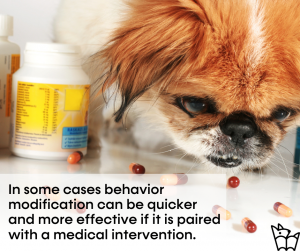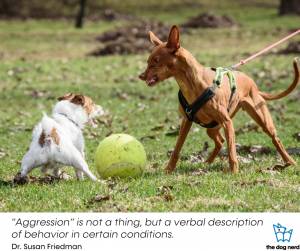Even though the stigma surrounding psychotropic meds for humans has decreased in the past decades, many dog owners are still afraid of pharmacotherapy. They worry that medication will change their dog’s personality, turn their companion into a “zombie”. Many still believe that medication is a last result, but actually in some cases behavior modification can be quicker and more effective if it is paired with a medical intervention.
Tag: dog training
Help, my dog is aggressive! Part 2
(Disclaimer: It is not my goal to diminish the problem. Aggressive behaviors are not acceptable in our society and showing them can have serious consequences for the dog and their owner, as well as for the victim. Living with an aggressive dog can also cause a lot of stress and anxiety for the owner. It might be a good idea to see a therapist yourself!)
“Aggression” is one of the most frequent reasons for seeking out professional help. Basically, any strong reaction (barking, lunging, snapping) in any context can get labeled as “aggression” and people usually assume bad intent behind it. While some dogs certainly aim to bite, many – if not most – show aggressive behaviors simply in order to get more space. When dealing with any kind of problems, it is important to separate our narrative from the facts.
This post examines what aggression is and how it can be analyzed. Catch up on what aggression isn’t in part one.
3 steps to make your training more efficient and more fun
I think that once you get into training, it suddenly seems so simple! But sooner or later everyone gets stuck and discovers that given the right skills it is easy, but it is not simple… Follow these three steps to make training more fun and effective for you and for you learner.
Continue reading “3 steps to make your training more efficient and more fun”
Help, my dog pulls on the leash!
Intro
In this series we have written time and time again that equipment cannot replace training and you should not use anything that causes them discomfort and pain to make dogs stop pulling (or barking, or jumping…). At the same time, many dogs are very strong and they pose danger:
-
- to their owners (sprained wrists, leash burns, injuries from falls…),
- to themselves (running blindly under cars), and
- to other dogs (especially if they get loose).
In this post you will learn how to manage the situation while you train them to stop pulling (preferably with a competent professional).
What is aversive equipment?
DISCLAIMER
What is aversive equipment?
A stimulus is aversive when it is something that the dog will work to avoid. We define equipment as aversive when it causes discomfort or pain to the dog by design 2, in order to make them behave the way we want.




